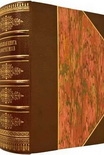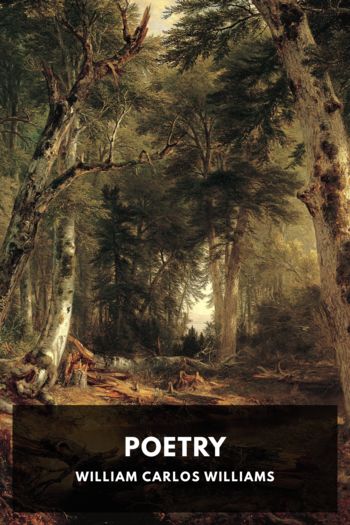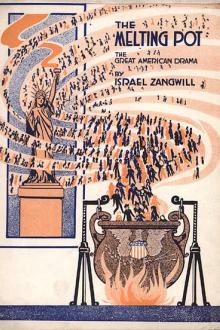No Modernism Without Lesbians, Diana Souhami [love books to read txt] 📗

- Author: Diana Souhami
Book online «No Modernism Without Lesbians, Diana Souhami [love books to read txt] 📗». Author Diana Souhami
‘I’ve got my house, my atelier and my fencing school all engaged for the summer as likewise a cook lady…’ Leo wrote to Mabel Weeks, a student friend of Gertrude’s. He asked Gertrude to come and live with him, hoping she would anchor him. She was hesitant, but agreed to join him for the summer. She stayed until her death in 1946.
They travelled to Rome, Florence and Fiesole to look at paintings. They met up with the wealthy Cone sisters, Claribel and Etta, Baltimore friends of Gertrude’s, who were keen art collectors. ‘Gertrude and Sister C. came,’ Etta wrote in her diary. ‘Had a table d’hôte dinner at Fiesole and all got drunk… Gertrude and I lay there and smoked… Gertrude is great fun.’
Gertrude Stein with the Cone sisters © Wikimedia Commons
Gertrude then went back with Leo to rue de Fleurus. Together they bought stuff for the apartment: high-backed Renaissance chairs, a fifteenth-century buffet decorated with carved eagles, seventeenth-century terracotta figurines, Italian pottery and, above all, paintings. Leo led the way but it became a joint enterprise, a shared enthusiasm. They bought prints – a picture of a woman in white with a white dog on a green lawn by Raoul du Gardier (a French painter and engraver with a studio in boulevard du Montparnasse), but the contemporary figurative work Leo saw did not particularly interest him and the older paintings were too expensive. ‘I wanted an adventure,’ he said.
her fit vocation
Paris worked its magic for Gertrude: the apartment was lovely, Hélène, Leo’s cook, served an excellent roast chicken, Leo was protective, a fixed income went further than in the States.
To exorcise May Bookstaver, she wrote in fictional form about the affair. She worked in the studio adjacent to the apartment: ‘Leo never did paint there. I sat down in there and pretty soon I was writing and then he took a studio elsewhere, and we lived together there…’
She called her novel Q.E.D. May Bookstaver’s letters were her reference material and they showed what she knew they would prove. Quod Erat Demonstrandum. The novel was a literal portrayal with only the names changed and her thesis was that the relationship had an inevitable trajectory, clear from the start. She wrote FINIS on the last page on 24 October and put the manuscript away in a cupboard. She said she forgot about it for thirty years and told no one of it until 1932, when she showed it to her agent, William Bradley – he and his wife, Jenny, were agents for most of the ‘Paris exiles’. They discussed publication but he advised against, because it was about lesbians. Alice B. Toklas, by then Gertrude’s partner for twenty-six years, read the manuscript and in a jealous rage destroyed all May Bookstaver’s letters to Gertrude. Q.E.D. was not published until 1972, when all involved were dead.
After finishing Q.E.D., and while making notes for her book about everybody in the world, Gertrude began writing Three Lives, fictional stories of three women, or as she put it ‘a German woman, a German American woman and a negro woman, three serious stories and in each story one of them’.
In December 1903 Michael gave up managing the railroads and moved to Paris with Sarah and their young son, Allan. He realized that he, as well as Gertrude and Leo, could have enough money to live in Paris on the dividends from his various investments. He was known by some as Mr Sarah Stein. His wife was boss. They rented an apartment converted from a Protestant church, at 58 rue Madame, near rue de Fleurus. The living room, which had been a schoolroom, measured 40 × 45 feet.
‘In our American life’, Gertrude wrote in her second novel, Fernhurst:
where there is no coercion in custom and it is our right to change our vocation so often as we have desire and opportunity, it is a common experience that our youth extends through the whole first twenty-nine years of our life and it is not till we reach thirty that we find at last that vocation for which we feel ourselves fit and to which we willingly devote continued labor.
By 1904, Gertrude was thirty and writing was her fit vocation to which she ‘willingly devoted continued labor’, albeit as the years went by only for half an hour after dinner. Her drifting days were done. She and Leo created a home together that quickly became famous. He went to art school in the mornings and a life-drawing class in the afternoons, but, unlike Gertrude, he could not settle to any profession.
collectors of modern art
Leo was at ease with Gertrude and wanted to spend the rest of his life with her. He rescued her when she was in turmoil and gave her a context to find herself. Their pleasure was to buy modern paintings together. Leo described this as a big adventure. They set themselves a limit of 300 francs a picture and purchased not with thoughts of investment, but because they liked the pictures and wanted to hang them on the apartment walls. They could only afford work by relatively unknown artists.
The adventure began in spring 1904. Bernard Berenson was in Paris. He asked Leo, ‘Do you know Cézanne?’ Leo said no. Berenson told him of Charles Loeser, an American art historian who lived in the Villa Torri Gattaia in the Florentine hills and had a collection of Cézanne’s paintings. That summer, Gertrude and Leo visited Loeser and saw an array of Cézanne’s work. Leo said he went back to Paris ‘a Columbus setting sail for a world





Comments (0)